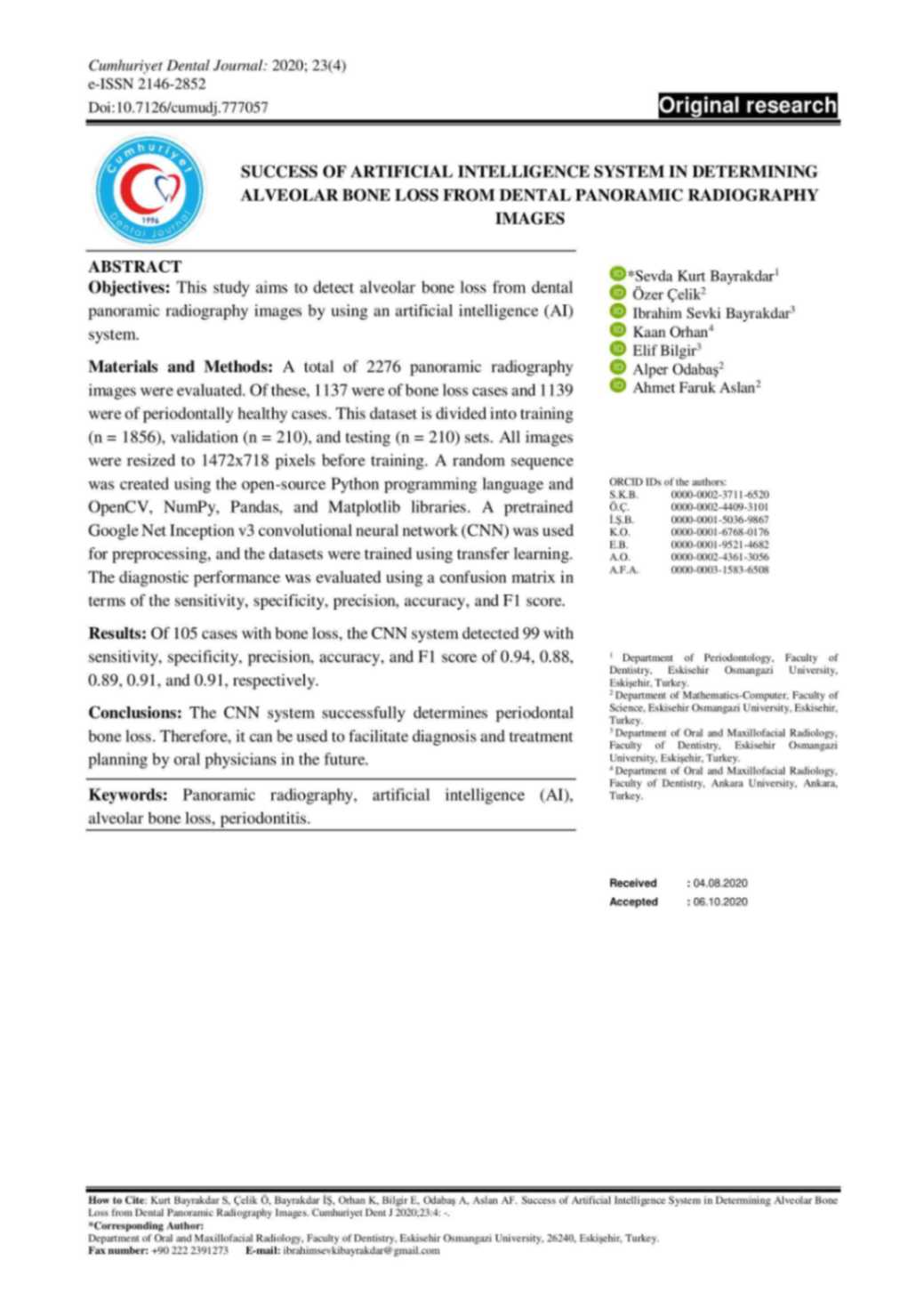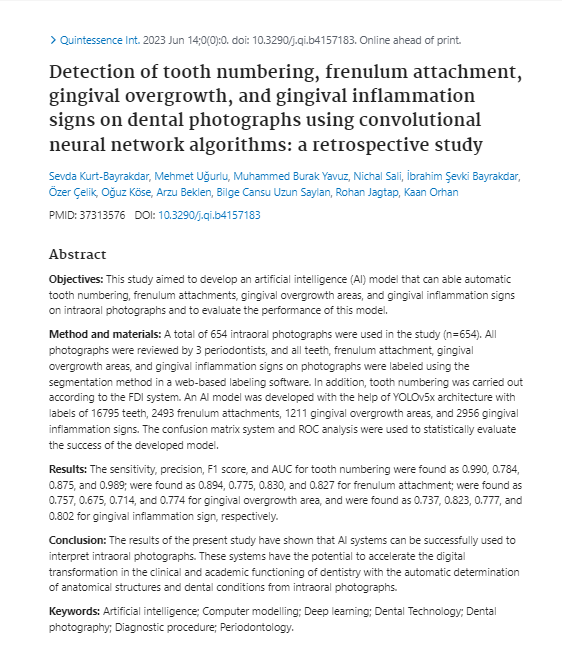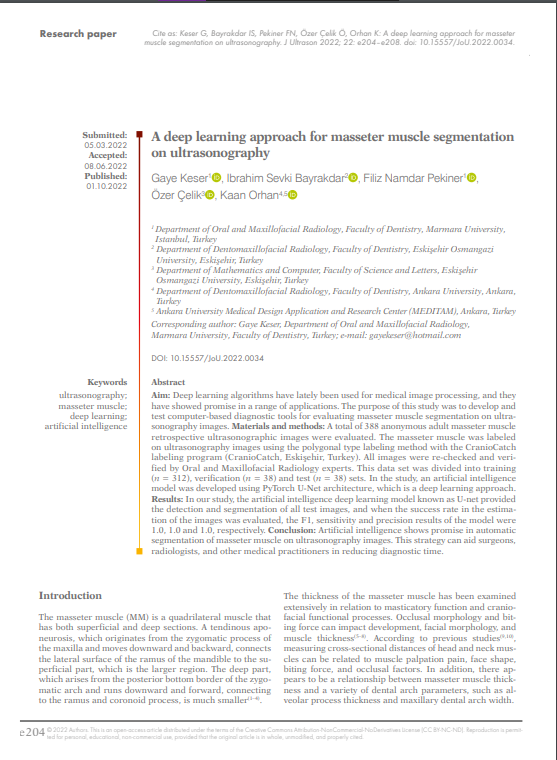A Deep Learning Approach to Automatic Tooth Caries Segmentation in Panoramic Radiographs of Children in Primary Dentition, Mixed Dentition, and Permanent Dentition
Summary
This study explores the application of deep learning techniques to automatically segment tooth caries in children using panoramic radiographs. The research targets children in three dentition stages: primary, mixed, and permanent. By leveraging the U-Net deep learning architecture, the study demonstrates a promising approach to enhance the accuracy and efficiency of dental caries detection.
Introduction
Tooth caries, commonly known as cavities, are a prevalent dental issue among children. Early detection and treatment are crucial to prevent further dental complications. Traditional methods rely heavily on the expertise of dental professionals, which can be time-consuming and subject to human error. This study aims to automate the detection process using advanced deep learning models, thereby assisting dental professionals and improving diagnostic accuracy.
Methodology
- Data Collection: The study utilized a dataset of 450 panoramic radiograph images from children at various dental stages.
- Annotation: A certified radiologist manually annotated the images to create a ground truth for training the deep learning model.
- Model Architecture: The U-Net architecture, known for its effectiveness in biomedical image segmentation, was employed for this task. U-Net consists of an encoder-decoder structure that allows precise localization and segmentation of features.
- Training and Validation: The dataset was divided into training and validation sets. The model's performance was optimized through iterative training, adjusting hyperparameters to achieve the best results.
Results
- Performance Metrics: The model's accuracy was assessed using the Intersection over Union (IoU) metric, a standard measure for evaluating image segmentation tasks.
- Segmentation Accuracy: The U-Net model achieved high IoU scores, indicating its capability to accurately segment tooth caries from panoramic radiographs.
- Comparison with Traditional Methods: The automated approach demonstrated superior consistency and efficiency compared to manual annotation by radiologists.
Discussion
- Clinical Implications: The implementation of an automatic segmentation system in clinical settings can significantly aid dentists by providing a reliable second opinion, reducing diagnostic time, and minimizing human error. This can lead to quicker treatment decisions and better patient outcomes.
- Cost and Time Efficiency: Automated systems can process large volumes of radiographs swiftly, resulting in substantial time and cost savings for dental practices.
- Limitations and Challenges: The study acknowledges potential limitations such as the need for large, diverse datasets to train the model effectively and the challenge of generalizing the model across different populations and imaging conditions.
Future Directions
- Model Enhancement: Future research could focus on expanding the dataset, incorporating more diverse radiographs to improve the model's robustness and generalizability.
- Advanced Techniques: Exploring other deep learning architectures and techniques, such as 3D imaging and multi-modal data integration, could further enhance diagnostic capabilities.
- Broader Applications: Extending the automated segmentation approach to other dental conditions, such as periodontal disease and orthodontic abnormalities, could provide comprehensive diagnostic support.
Conclusion
This study showcases the potential of deep learning in revolutionizing dental diagnostics. The U-Net based automatic segmentation model provides an accurate, efficient, and reliable method for detecting tooth caries in children. By integrating such technologies into clinical practice, the dental field can achieve significant advancements in patient care and operational efficiency.
I Want to Write a Scientific Research Project
CranioCatch is a global leader in dental medical technology that improves oral care in the field of dentistry. With AI-supported clinical, educational, and labeling solutions, we provide significant improvements in the diagnosis and treatment of dental diseases using contemporary approaches in advanced machine learning technology.
CranioCatch serves thousands of patients with dental health issues worldwide every day with its innovative technologies. That’s why we eagerly look forward to meeting our valued dentists who wish to work in the field of 'Scientific Research in Dentistry'.



 Contact Us
Contact Us

